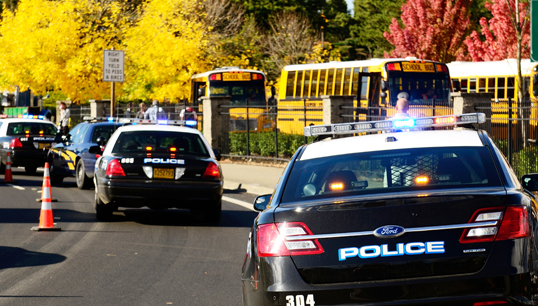Emergency preparedness means that you have a system in place to prevent, prepare, respond, and recover for emergencies, both natural disasters and man-made events (such as violent incidents, bomb threats, or active shooter situations).

In a study that surveyed over 350 schools, Reuters reported that many public schools in the US are not equipped for disasters. Researchers also found that when compared with larger school districts, smaller, more rural districts are less likely to allocate spending for emergency preparedness training. This training benefits school faculty, staff, students, and their families with important crisis planning information. This lack of funding could be linked to smaller budget allocations for smaller districts, but certainly does not negate the fact that schools need to stay resilient with an emergency response plan if nothing else.
Is your school prepared? Here's what you should do to make sure that you're ready if and when crisis hits.
1. Develop an Emergency Response Plan:
This plan should be updated annually. Within it, you should address all types of emergencies. Questions to consider include:
I. Who would carry out specific responsibilities?
II. What actions or activities need to occur following the emergency crisis incident?
III. When will the plan be activated?
IV. Where should faculty and staff report?
V. Why are these actions necessary to ensure the safety of students, staff, and faculty?
VI. How will the response be managed during an emergency crisis incident?
When developing this plan, don't forget to include provisions for students with learning & developmental disabilities, visual & hearing impairments, and physical limitations. A few tips include:
I. Identify alternative evacuation routes and shelter for students with mobility problems
II. Develop a communication system for the visual and hearing impaired
III. Assign a buddy for each student with a disability
IV. Communicate with all students using a common vocabulary
V. Train staff in procedures to assist students with disabilities
2. Develop a Crisis Response Team:
This team should include key personnel such as the principal, teachers, the school nurse, counselor(s), and the custodial staff. Each person should have clear and defined roles in an emergency.
3. Develop a Communication Plan:
Develop and disseminate a communication plan for emergencies. Describe how staff, students, and parents will be notified in an emergency, and what messaging will be used in each possible situation.
4. Provide Regular Practice and Training:
If resources allow for training, regularly running through the emergency plan's procedures with staff will create for more successful emergency responses. Each year there should also be practice drills with the students and staff - think fire drills, active shooter drills, etc.
5. Evaluate Your Emergency Alert Technology:
Does your campus' technology support your emergency response plan? Would upgrading the technology simplify your plan?
A recent CBS study identified the top 5 safest school districts in California and found that the schools had two things in common: each school had a fenced-in property, and each school had an automated emergency alert system. That is not a coincidence!
These emergency alert systems sync up with your facility's existing access controls, fire alarms, internal telecommunications, digital signage (for visual alert messages) and local law enforcement. These systems are designed to improve the outcome of emergencies by enabling faster responses and more effective school emergency communication between schools, staff, 9-1-1 dispatchers, and your crisis response team.
Traditional communication platforms, like basic telephone systems, simply don't meet the need of efficient crisis management. In any emergency, time can mean the difference between life and death. The chance of a person surviving a heart attack decreases 7-10 percent for every minute CPR is not performed, the majority of active assailant events are over within 10 minutes, and fires can engulf whole buildings before your phone call even makes it to the recipient.
For lock-outs, lock-downs, and evacuations, your district-wide notifications should be coming from a single, reliable source that targets the district, campus, or particular school. You should also be able to customize your response; every situation is unique, and your message should be too - via browser, phone, or panic button alike. Further, you should be able to monitor what classrooms are and aren't locked down, allowing you to continue the emergency alarm until they all answer.
With many emergency alert systems to select from, we encourage you to choose a solution backed by solid K-12 critical communications experience and a local support team for when you need immediate assistance. Rauland, with 80 years of experience in student safety, offers one the strongest solutions with their Telecenter U system. Over 5,000 schools nationwide have chosen Rauland for emergency preparedness and response, event management and everyday seamless communications.
Check out this whitepaper, The Importance of Communications in a School Crisis Plan,
for more information about how Rauland prioritizes campus safety in the moments that matter most.




